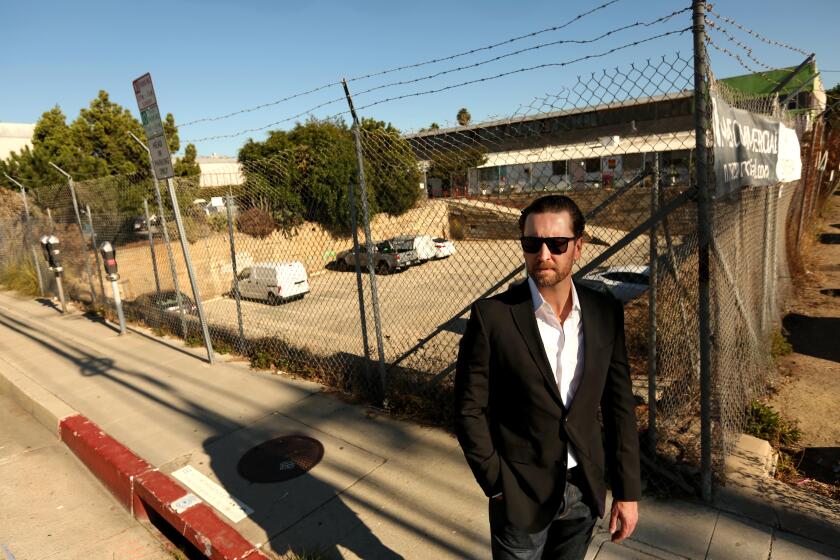In Beverly Hills, no kitchen remodels or pool grottoes as judge orders building moratorium over lack of affordable housing
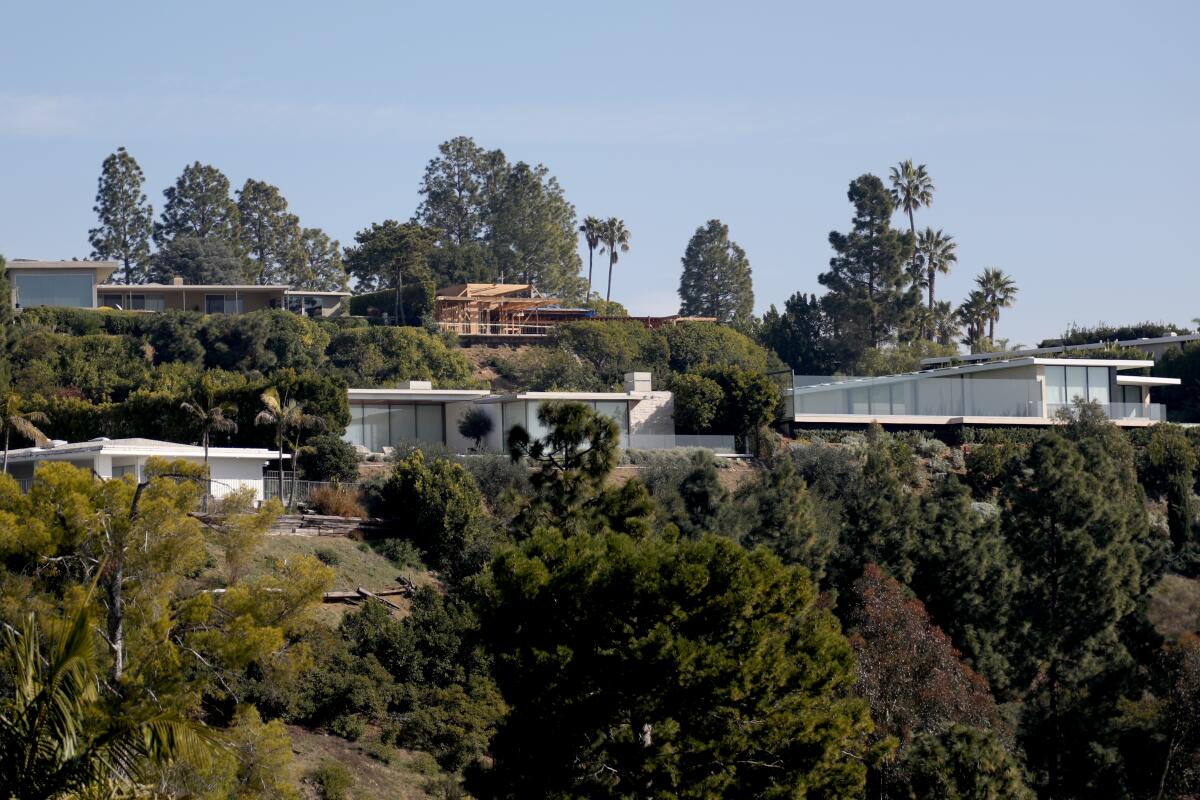
Projects that cross the transom of the Beverly Hills building department include the extravagant — pool grottoes and bowling alleys — as well as the more quotidian kitchen and living room upgrades.
In recent months, the city approved a $100,000 basement spa in the $125-million mega-mansion owned by WhatsApp co-founder Jan Koum, exterior upgrades for an $80,000-a-month rental and a $130,000 kitchen and bathroom remodel in a home purchased a week before for $6.7 million.
Now, any similar home improvements desired by Beverly Hills property owners are under threat.
Last month, Los Angeles County Superior Court Judge Curtis A. Kin blocked the city from issuing all building permits except for new residential development as a penalty for Beverly Hills’ failure to approve a sufficient blueprint for affordable housing.
Officials are appealing the decision and say they’re continuing to process permits as normal. But the potential ramifications on home and business owners and the construction industry have left civic leaders aghast.
“I’m shocked by the judgment,” said Murray Fischer, a real estate attorney who has practiced in Beverly Hills for 50 years. “It would mean that the city is at a standstill.”
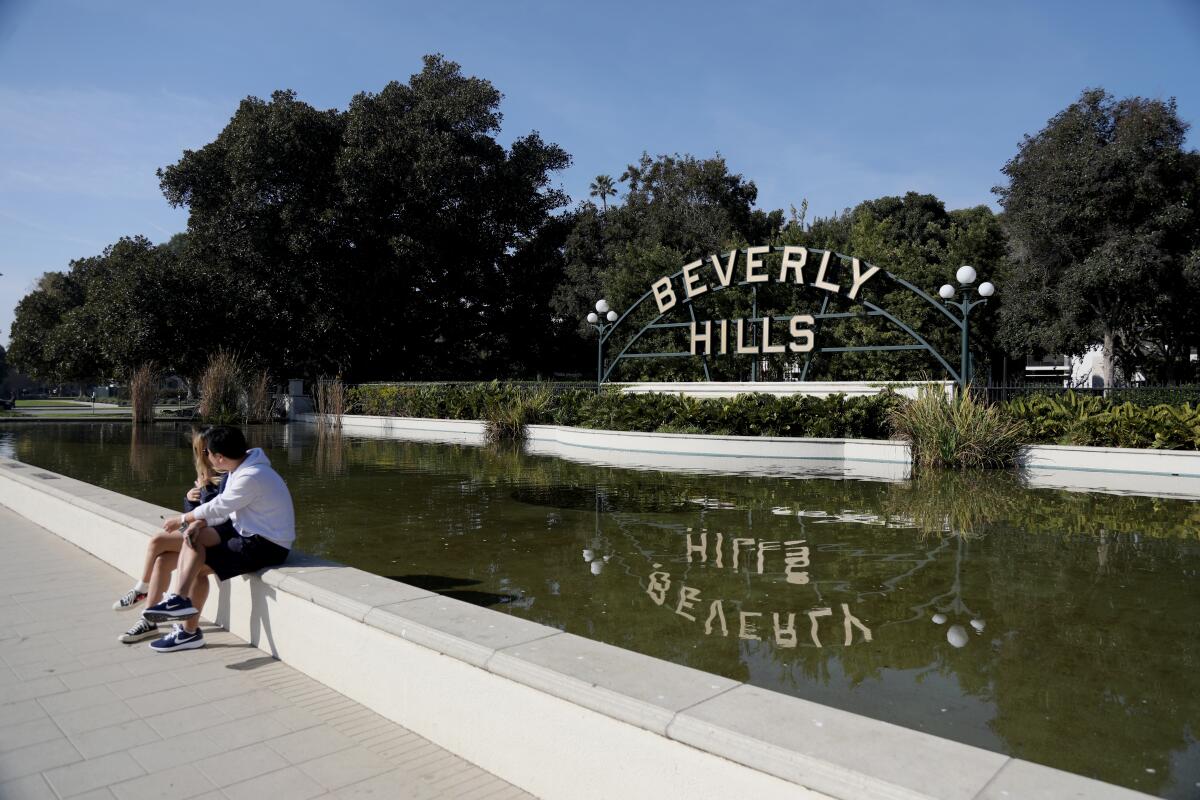
The permit moratorium would be among the most concrete consequences of California’s attempts in recent years to push cities to allow for new housing, including in wealthy communities that have long resisted it.
Few if any places are more famous for their luxury than Beverly Hills, where entrepreneurs and entertainers — such as Jeff Bezos, Leonardo DiCaprio and Taylor Swift — own mansions, opulent hotels attract well-heeled visitors, and glamorous boutiques make Rodeo Drive one of the most expensive shopping strips in the world.
Coronado officials have thumbed their noses at Gov. Gavin Newsom and state regulators, calling the process “central planning at its worst” and assuring residents that it will be years before the state cracks down.
Yet growth has been nonexistent. In 1970, the population of Beverly Hills was 33,400. Today, it is 32,400. Over the same period, the number of California residents has doubled to nearly 40 million.
Home and business owners in Beverly Hills frequently remodel their properties, but the makeup of the community — with single-family homes north of Santa Monica Boulevard and largely multifamily and commercial development south — has remained the same. Some residents argue the city’s fame and beauty result from efforts to preserve it as it is.
“We have intentionally created a desirable environment by deliberately avoiding overdevelopment and over-densification,” said Thomas White, chair of the Municipal League, a 60-year-old civic organization.
State officials previously had not challenged Beverly Hills despite a 50-year-old law that requires local governments to plan for a growing population and allow people of all incomes to live in every community.
Under the law, every eight years the state tells all cities how many new homes they need to accommodate. In the cycle before this one, Beverly Hills’ total was three, an amount so minuscule given the depths of California’s housing problems that it invited national attention.
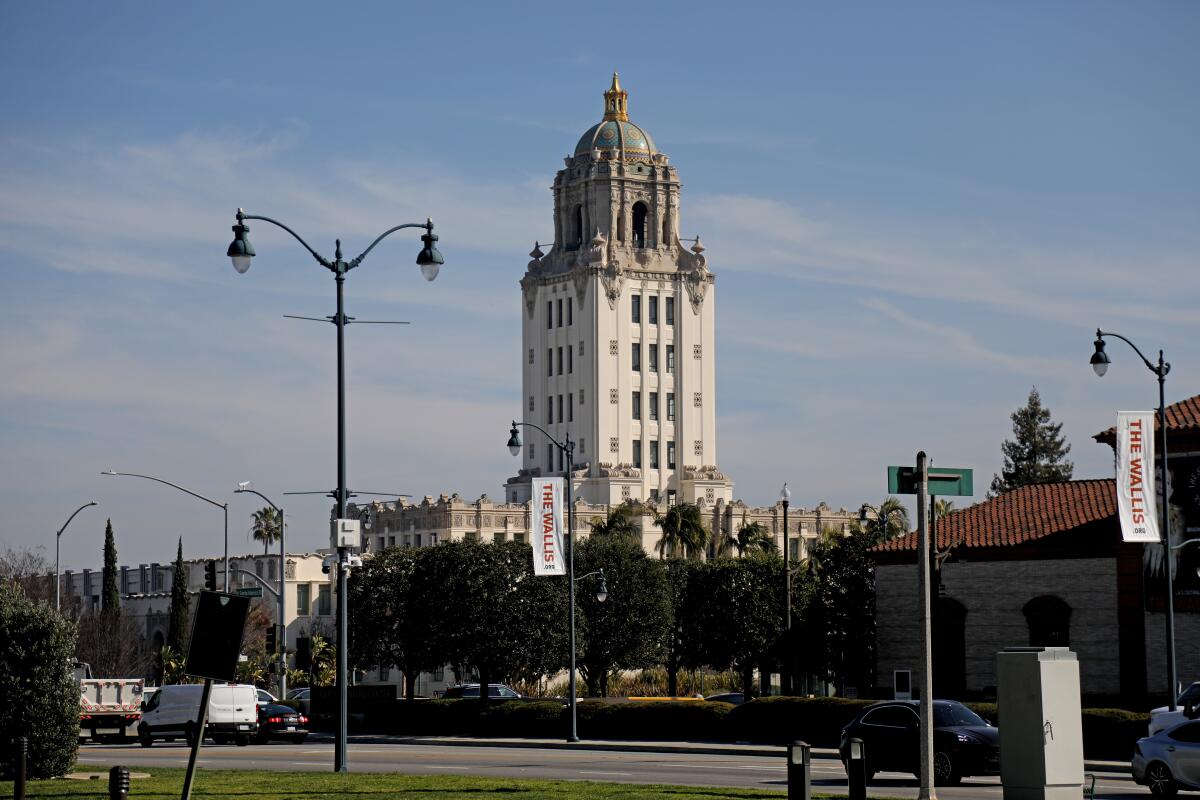
In an effort to combat widespread housing unaffordability and reduce carbon emissions, state legislators in recent years have passed a series of laws aimed to encourage more development in cities near job centers and mass transit. No longer, they argued, should wealthy enclaves get a pass — citing the discriminatory effects of low-density zoning laws and research showing better economic and health outcomes for low-income families that can move to richer areas.
In the current period, Beverly Hills’ target under the housing planning law jumped to 3,104 homes, with three-quarters of them affordable to low- and middle-income residents.
After an hour of debate, Herb Perez had had enough.
The state does not mandate that cities build or approve new projects, just that they zone for them. Nevertheless, after Beverly Hills’ number was set in late 2019, years of angst followed.
The city’s strategy has been to try to continue to wall off its existing residential neighborhoods — those with the mega-mansions and apartments buildings alike — and instead concentrate growth in commercial areas through mixed-use development.
The plan hasn’t worked. The state has rejected five blueprints from Beverly Hills since summer 2021, most recently in December. California housing department officials said the city is overestimating how many of its commercial properties could add residential development and criticized the plan on fair housing grounds for not allowing more affordable housing in the city’s whiter and more affluent areas.
As Beverly Hills was fighting with the state, Californians for Homeownership, a nonprofit funded by the California Assn. of Realtors, sued the city last January, asking a judge to compel officials to pass a compliant housing plan. Kin agreed that Beverly Hills’ blueprint was deficient, citing similar issues as the state.
The judge noted that Beverly Hills is counting on medical office buildings and car dealerships to convert to housing, despite the city’s own concession that it’s unlikely to happen. In its plan, for instance, the city says an Audi dealership on Wilshire Boulevard that was just renovated could turn into 41 apartments.
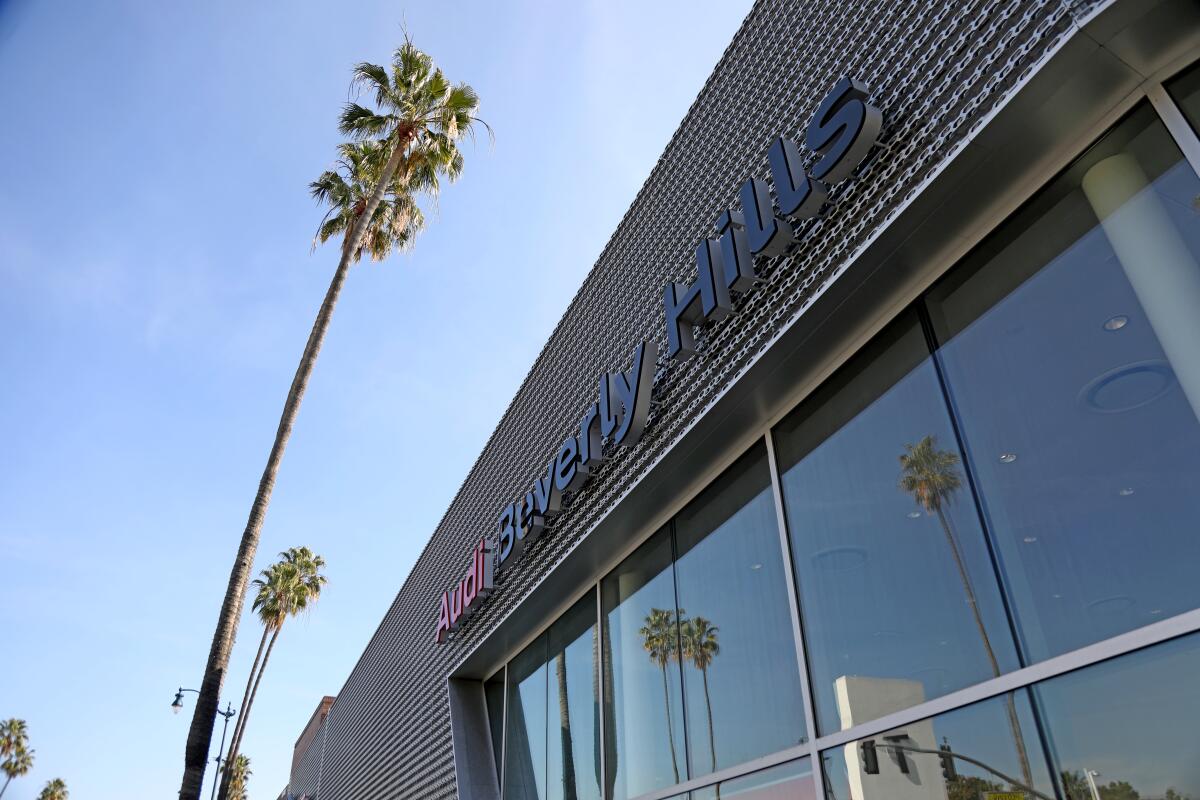
Matthew Gelfand, an attorney representing Californians for Homeownership, praised Kin for the permit moratorium, saying that the decision could lead to a groundswell within Beverly Hills to make a deal with the state.
“There is some real consequence to the city continuing to drag its feet,” Gelfand said, “a real consequence that will make people demand that the city do its job.”
Gelfand said the permit moratorium should now be in effect. But he said he’s open to negotiations to pause it while the case is under appeal.
Similar permitting moratoriums have been issued in cases involving local housing blueprints for some time, seen as a remedy harsh enough to cajole reluctant cities, though they’re typically put on hold to give local governments one more chance to take action. An August legal settlement involving state Atty. Gen. Rob Bonta and the city of San Bernardino calls for a permitting moratorium triggered only if the city doesn’t pass a state-approved housing plan this year.
But targeting a community as wealthy — and with as busy and expensive a home remodeling industry — as Beverly Hills is unprecedented, said Bill Fulton, a fellow at UC Berkeley’s Terner Center for Housing Innovation and an expert on California planning.
Fulton attributed the decision to the state’s more aggressive housing targets combined with outside groups’ increasing willingness to sue.
“It was inevitable that some judge was going to do this,” he said. “But whether this becomes the norm or not, I don’t know.”
Besides pursuing an appeal of the court ruling, Beverly Hills officials plan to submit additional information about the city’s housing blueprint to the state in the coming weeks in the hopes of garnering approval soon, city attorney Larry Wiener said in a statement.
Beverly Hills is facing potential impacts aside from the permit moratorium. Developers are taking advantage of a tactic available only when cities don’t have a compliant housing plan to propose building essentially whatever they want as long as they set aside a certain number of units for low- or middle-income residents.
Developers in Santa Monica are planning 4,500 new apartments under a little-known state legal provision — and the city might not be able to stop them.
Eight projects totaling 706 units have been put forward at heights and densities that otherwise wouldn’t be allowed, including a 19-story tower blocks from the Waldorf Astoria and Peninsula hotels that would be the tallest building in Beverly Hills. If constructed, the developments would bring roughly 140 low-income homes to the city, seven times more affordable housing than was built in the entire previous eight-year cycle.
In contrast to affluent enclaves in Silicon Valley or coastal communities up and down the state, Beverly Hills, with its robust commercial district and central location, always has had a level of urbanity and a mix of housing. Nearly 60% of Beverly Hills housing stock is apartments and condominiums, and more than half its residents are renters.
Half those renters pay more than 30% of their incomes on housing, an amount the federal government considers “cost burdened,” an example of affordable housing problems directly affecting Beverly Hills.
Still, residents opposed to the state’s housing mandates say they will require too much change.
“When you try to force too many sardines into a sardine can, you end up with something inedible,” said White of the Municipal League. “It’s the same thing here. You have a fully built out city, and the state wants to force a lot more people into it. We don’t want to see our city destroyed one square foot at a time.”
Fischer, the real estate attorney, is part of a group of local lawyers, architects, real estate investors and others who have proposed meeting state requirements by raising height limits in prime mixed-use areas to as tall as 100 feet. He agreed with the city’s attempts to limit growth in residential areas and said he believes the proposal is a fair one.
“There are very limited amounts of space where they can provide for greater housing,” Fischer said.
Others, even those who would lose business during a permit moratorium, said it’s time Beverly Hills faced sanctions for its resistance to new development.

Andrew Slocum, co-owner of Urban Development Co., said Beverly Hills’ zoning and building restrictions make it too hard on firms like his that are trying to provide smaller mixed-income and affordable housing projects in the community. Slocum, whose company also has worked on home remodeling in Beverly Hills, said he supports a moratorium to force the city to act.
“It’s going to cause a little bit of pain for people who work in that municipality, but I think sometimes pain creates change,” Slocum said.
Slocum said that because the city is continuing to process remodeling projects, many are unaware of last month’s court decision. But if that changes, he said, the reaction probably will be immediate.
“The minute someone goes in there and they do not issue permits, it’ll be wildfire through the developer, the builder, the contractor community,” Slocum said. “It’s unheard of.”
More to Read
Sign up for This Evening's Big Stories
Catch up on the day with the 7 biggest L.A. Times stories in your inbox every weekday evening.
You may occasionally receive promotional content from the Los Angeles Times.


